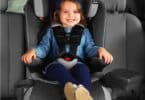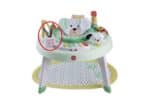The American Academy of Pediatrics recommended that all U.S. children should be formally screened for autism twice by the age of 2.
The new guidelines focus on early intervention, which can improve a child’s chances for effective treatment.
“If you recognize it earlier, you get them into treatment earlier,” said Dr. Scott Myers, a pediatrician who specializes in neurodevelopment and who helped write two clinical reports designed to help pediatricians identify and manage autism.
“Kids who start (treatment) earlier do better in the long run,” Myers said in a telephone interview.
The guidelines for the first time call for universal screening of babies at the regular 18- and 24-month check-ups, regardless of whether there are warning signs. They will be published in the journal Pediatrics and on the group’s Web site at http://www.aap.org.
No one knows what causes autism, a complex developmental disorder that includes problems with social interaction and communication.
Symptoms range from mild awkwardness to severe disability and mental retardation. The U.S. Centers for Disease Control and Prevention estimates that about one in every 150 U.S. children has autism or an autism spectrum disorder, such as Asperger’s syndrome.
The guidelines urge pediatricians to watch for subtle signs, such as a lack of babbling, late smiling and failure to make eye contact. Picking up on these cues could lead to earlier diagnosis and treatment.
Warnings signs needing immediate evaluation include: no babbling or pointing or other gestures by 12 months, no single words by 16 months, no two-word phrases by 24 months and regression or loss of language or social skills at any age.
It has been proven that early intervention can make a big difference in a child’s outcome.
SOURCE






